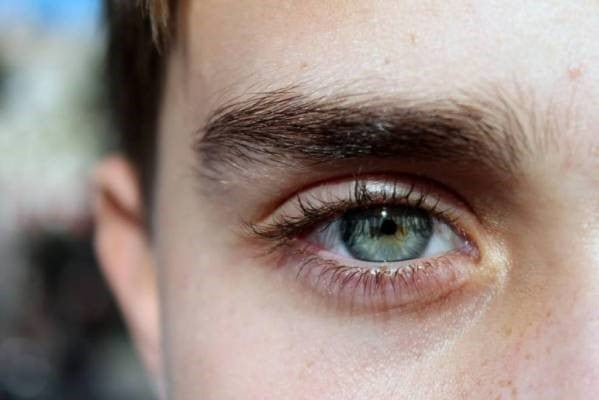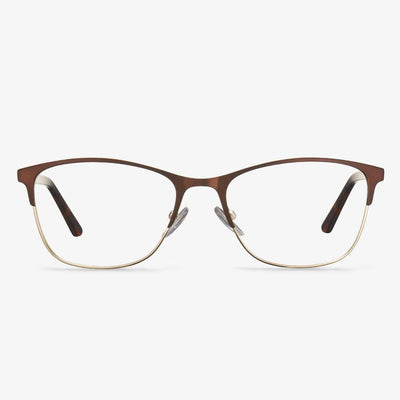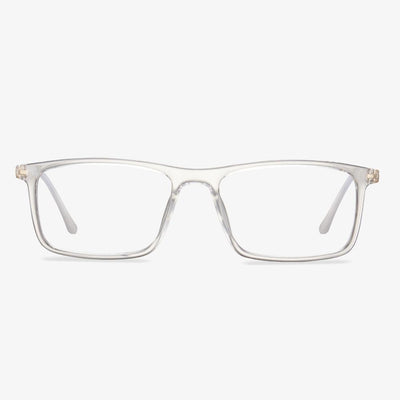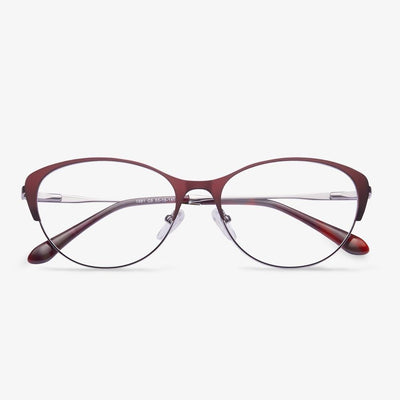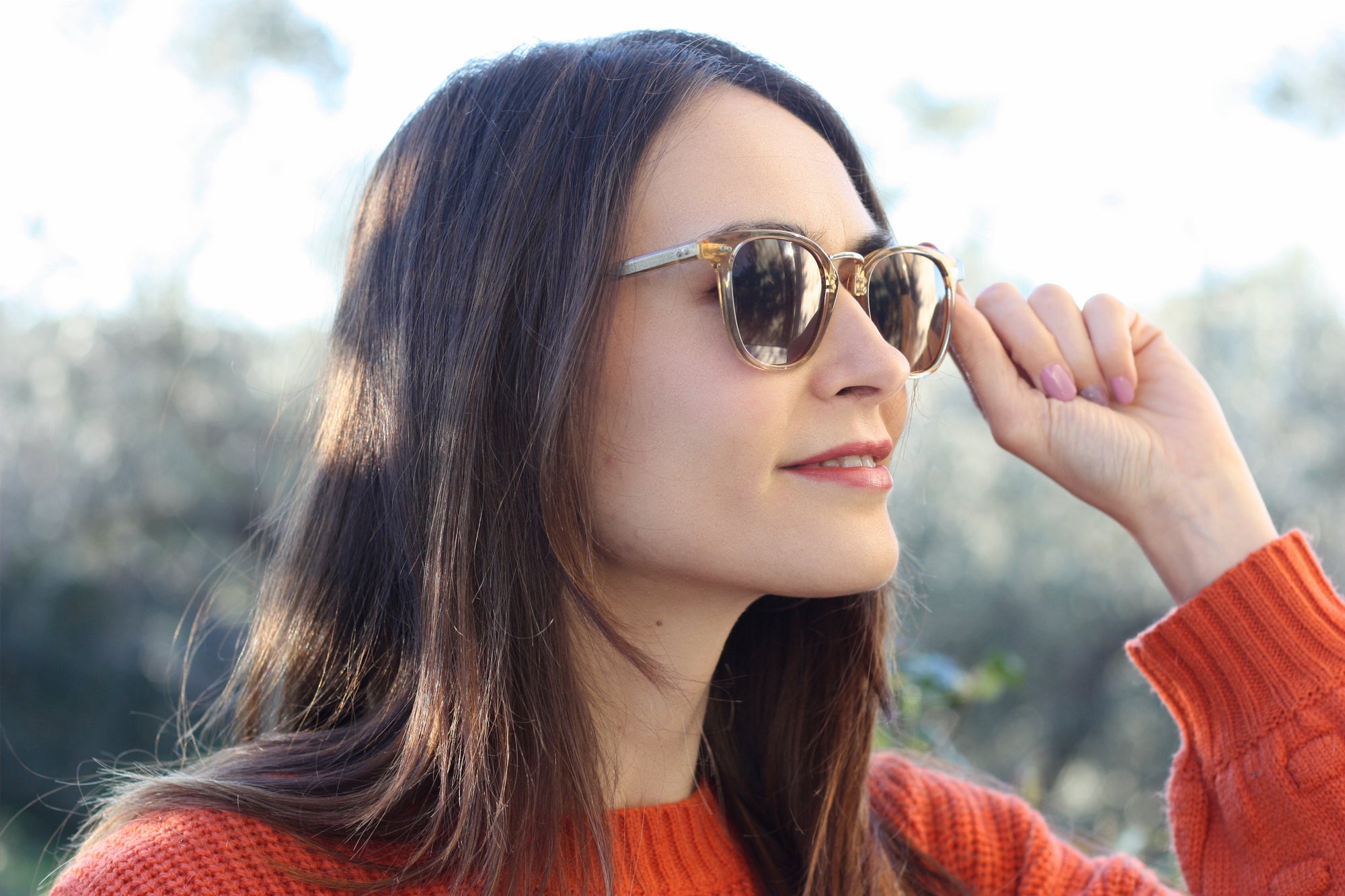How to Adjust Glasses If They Pinch Your Nose
In some cases, glasses will pinch your nose, so you also need to adjust them, too. If the glasses frames are metal, you should simply widen the plastic nose pads using your thumbs until the frames fit comfortably. If the glasses frames are plastic, you should soak the arms of your glasses in warm water for 30-60 seconds, and gently apply upward and outward pressure on the end of the arms to get a more relaxed fit.
After that, your glasses will become more suitable.
Unfortunately, not all glasses can be adjusted by yourself at home. You can’t adjust some glasses which are based on the material of your glasses. For example, the glasses with the following material can’t be adjusted at home:
1. Aluminum alloy.
2. Memory plastic.
3. Titanium or memory titanium.
If your glasses are made of these materials, you can’t adjust them by yourself at home. If something goes worse, you need to buy a new pair of glasses. It is also risky to adjust the rimless or semi-rimless glasses by yourself at home.
As for how to tighten glasses or how to adjust glasses, you may have brief knowledge after reading this post. If your glasses are already broken or you want to get a pair of new glasses, you can try Koalaeye Optical, which is cheap and has a free shipping service.
1.67 vs 1.74 High Index Lenses: What Are Their Differences?
In this section, we will show you the differences between 1.67 high index lenses and 1.74 high indexes.
- 74 high index lenses are thinner and lighter than 1.67 high index lenses.
- 74 high index lenses are expensive than the 1.67 high index lenses.
- Both 1.67 and 1.74 high index lenses can reduce the eye distortion caused by strong prescriptions, 1.74 high index lenses perform better than the 1.67 high index lenses.
- As for the color of lens, both come in clear, gray-tinted and brown-tinted, but only 1.67 high index lenses come in Transition brown or gray.
- 74 high index lenses are better for those looking for the thinnest lens possible. So, patients with extremely strong prescriptions chooses this.
- 67 high index lenses are better for those looking to save money or those who do not have extremely high prescriptions. They are also the only choice if you are looking to get Transitions.
From the above information, you can find the main differences between these two lenses are price, thickness, weight, color options and general appearance. Most people who choose 1.67 high index lenses generally either do not have an extremely high prescription or are shopping on a budget. 1.74 high index lenses, on the other hand, are the thinnest and lightest plastic lenses currently in existence.
The sporty style
Sporty style frames are a little cool, full of vitality, well-designed. They pay attention to every detail, with publicity but not exaggerated feelings. With good material, they effectively prevent collision injury to your eyes in the process of movement, greatly improving safety. The style is simple and smooth, and the appearance is dynamic and fashionable, and the color collocation is diversified. With the integration of four progressive technology to better protect your eyes, they are your outdoor leisure tourism sports choice.
What Should You Do If Your Glasses Are Broken?
Adjust the frame by yourself. If your frame is tilted, place your glasses on a flat surface to determine which arm is higher than the other. If the right arm looks raised, you'll need to use pliers to bend the left arm down at the hinge. Or, if the left arm is raised, bend the right arm at the hinge. You can bend your metal-framed arms inward. You can turn the nose pad inward if the glasses slip under your nose. To make the frames more flexible, you can heat them with a hairdryer. If the metal frame has broken into pieces, you may need to take it to a professional. However, if your metal frames just bend, you may be able to repair them by yourself.
What progressive spectacle lenses are best?
Essilor is a brand, and it designs, manufactures, and markets a wide range of lens products to help people correct and protect their vision. Essilor adheres to the corporate mission of 'improving vision, improving life', invests 200 million euros in research and development every year, and constantly launches new products to enhance consumers' experience in wearing glasses. Continuous innovation has always been the core gene of Essilor. In 1959, Essilor created the resin lens, and in the same year, it invented the world's first progressive lens. Innovation involves technology, manufacturing, sales, and service. Based on innovation, they can make as many people as possible obtain visual health, and this is the driving force to promote their development.
How to handle rusty spectacle frame?
Skin allergies are after the rust of the spectacle frame, so we have to solve the problem of rust of the spectacle frame by physical isolation. Apply a layer of transparent nail polish on the metal surface, or add an anti-allergic sleeve on the temple of the eyeglasses so as to separate the skin from the metal by resin. Both of these methods isolate the skin from the spectacle frame, effectively preventing corrosion of the spectacle frame caused by sweat and grease.
Features of Diamond Face Shape
Before proceeding with the glasses for diamond face shape, you need to know how to figure out your face shape and the features of the diamond face shape. This section will list some features of diamond face shape.
One of the most common features of diamond face shape is the presence of angles and pointed features and the widest part of the face is the cheek. And the forehead and the chin appear to give height to the face.
The forehead of the diamond face shape is not broad or wide. The size of the forehead is smaller than the cheeks indicating the upper part of the curve of the diamond. The shape of the cheeks is angular and the angles of the face are the widest feature on the face with the cheekbones placed a little higher. The jawline of the diamond face shape is narrower and is smooth with no angles or pointed features. And the lower part of the face is quite pointed or lacks angular features.
















